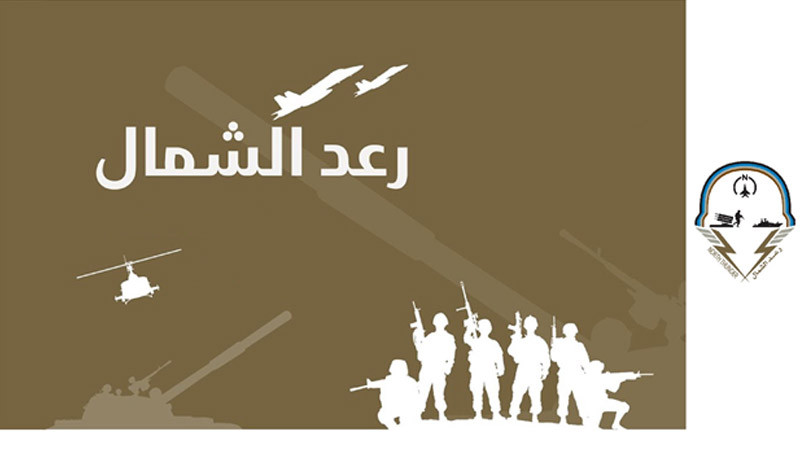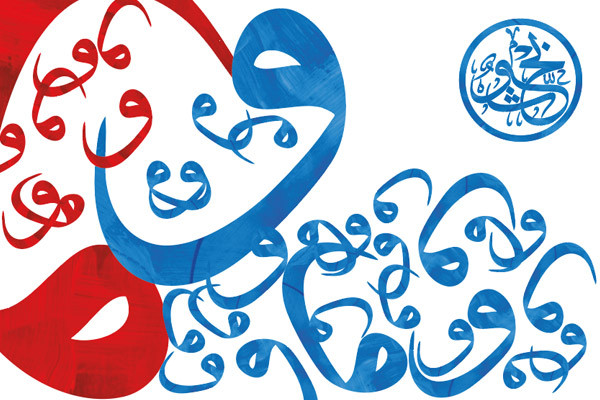After “Northern Thunder” Will There Be Rain?
When 350 thousand troops from 20 countries join a military exercise that involves over 20 thousand tanks,250 jet fighters and more than 400 helicopters, then there is a lot of thunder.

- by Mohammed Abdul Rahman Baharoon ,
- Monday, 25th April, 2016
Joint military exercises are seldom this big or complicated. The last major joint exercise was Nato’s “Trident Junction” in Spain last October which involved 30 nation but a total number of participating troops of 36, 000. March last year also witnessed the usual US involvement in bilateral military exercises with South Korea that involved 300 thousand Korean troops and 15 thousand American. The latter was “massive” but considered relatively routine given the long history of joint military exercises between the two allied countries that goes back to 1997.
By contrast, successfully organizing a joint exercise involving 20 countries that are neither part any formal defence cooperation agreement or have never held such an exercise together seems a challenging undertaking that has evidently been intended to send a political message that is very loud and clear. This month’s “Northern Thunder”, the Saudi-led joint military exercise was therefore potent and indicative of a new trend in the region.
As the Norther Thunder exercise got underway, very different reactions emerged as to the likely impact and future implication of these military wargames. Some saw it as “Sound and Fury Meaning Nothing” others feared that “WWIII could start this month” with the suggestion that the exercise roll into a full-scale invasion of Syria while Russia is still conducting ground operations.
However, it is suggested that understanding the value, and potential of the exercises, needs proper consideration of the geostrategic environment in which the Saudi-led exercise took place:
Though “Northern Thunder” involved 20 states, widely described as Sunni Muslim countries, a closer look reveals the regional dimension of shared security concerns. The exercise has involved countries both east and west of the Arabian Peninsula all of which are affected or could be affected by the threat from extremist militancy and opportunistic, hegemonic power plays. Asia and Africa are the most conflict intensive continents in the world. From Daesh to Boko Haram to Hezbollah the spread of armed militias and factions in the region have spread instability and elevated the risk of conflict.
The involvement of African nations in the exercise, even if symbolic in the case of Comoros, signifies the importance of Africa for Middle East security. The Houthi threat to close the Strait of Mandab, the still lurking threat from Somali piracy, the threat of Boko Haram actually aligning with Daesh, and the potential spread of militant chaos from Libya down into central Africa and across to the Maghreb has compelled Arab nations to recognise the need to invest in Africa’s security.
Most commentators, noting the absence of Lebanon and Iran from Northern Thunder, were quick to invoke the Sunni-Shite polarity, though Pakistan participated with both Sunni and Shite troops as did many other states including Kuwait. However, Iran’s absence is actually a result of a region wide understanding of the risk posed by Iran’s effort to pursue its own path towards creating as self-fashioned regional security structure. Iran is fighting in Syria with the Russians and fighting in Iraq with the US and is expanding its sphere of influence through destabilizing elements in Lebanon, Yemen as well as in Bahrain and Kuwait. With some easing of Western pressure, Iran seems to be banking on its own ability to build a new security structure through the very insecurity it continues to foment.
Also notably basement from the exercise was the involvement of allies from outside the region, particularly the Gulf’s traditional Western allies. This seems especially significant in light of how the region is trying to build independent security capacity without reliance on the United States or Europe. While this is partly linked to the Obama administration’s desire to row back from Middle East further imbroglios, thus creating a security vacuum and an opportunity for Iran to expand its regional influence; an influence the region is determined to roll back.
The Russian re-entry in the region, through its current operations against Daesh in Syria is also another factor in understanding “Northern Thunder”. Russia’s proclaimed enthusiasm for combating terrorism has given it license to re-engage in international military operations across the region and beyond. While Russia is supposedly in in Syria to fight Daesh, it has been at least as active in shoring up the Assad regime. At the same time, the US is back in Iraq - and of course, Iran is participating in both theatres. The implications of the possible clash between Russia and Turkey is a stark reminder of the consequences of such interference. The fact that Saudi Arabia and other Arab states have expressed willingness to provide ground troops to fight Daesh in Syria and that they announced an Islamic Alliance to fight terrorism and armed militias in the region reflects a will to limit further international interference in the name of countering terrorism.
Arguably, it is the security challenges that have drawn a new US and Russian military presence back to the region that now requires the countries of the region to develop greater military unity. After Northern Thunder, it seems possible that Saudi and the Gulf states are closer to creating a permanent security structure that would provide indigenous capacity to deal with existing and emerging security threats.
The Arab League’s announcement during the Sharm Al Sheikh summit in 2015, concerning the establishment of an Arab Joint Force, was immediately interpreted by some commentators as the prelude to the development of an “Arab Nato”. Equally, many observers dismissed the announcement as just another part of the “legacy” of the Arab League rhetoric. Nonetheless, the Norther Thunder exercises seem to have short-circuited the Arab League’s discourse and has also gone beyond the 22 member states’ jurisdiction; expanding to become a larger strategic framework to meet a wider set of challenges.
Northern Thunder may have ended with a ceremonial parade on 10 March 2016, but its impact may be more subtle. The massive military exercise can become the basis for stronger security coordination between participating states in a region surrounded by as many threats as opportunities. Avoiding the complex stage of building a standing Joint Force, Northern Thunder could readily become an annual exercise overseen by an allied coordinating committee that is able to identify lessons learned to enable the participating states to develop capacities that allow a faster, and more effective response to a broader range of security threats. This coordination could embrace issues from logistics to command and control protocols. Northern Thunder can also involve smaller and mission specific war games bilaterally or multilaterally. Such events would help to set the conditions for more robust security coordination that would enhance the strategic depth of the region and the magnitude of the challenges.
As a result, Northern Thunder is potentially the closest thing to a meaningful emerging cross-continental security structure that has outreach and political well way beyond what Iran can provide.
Originally published in Khaleej Times 24 April 2016

Mohammed Abdul Rahman Baharoon
Director General
Read More
Areas of Expertise
- Geo-strategy
- Reputation and soft power
- Public Policy and International Relations
Education
- Master’s degree in English Literature from Texas Tech University in 1995
- English Major from Kuwait University in 1987
Bio
He perused a career in media as a reporter for “Al Arabi” Magazine, Al Ittihad newspaper, and then Editor for Gulf Defense Magazine before starting as director of research at both and focusing on the interplay between Geostrategy and policymaking in governance, stability, capacity building, and future-proofing.
Mohammed has also worked as Deputy Director of Watani (UAE’s first initiative on National Identity) and is also a founding member of the board of “Bussola Institute” a think tank in Brussels that focuses on the changing and emerging aspects of the partnership between the EU and the GCC member states.
As part of his interest in the emerging geostrategic space of the Arabian Peninsula, Mohammed looks at Iran as part of the development of the area as a major trade artery. This development implies developing a sustainable relationship with its regional neighborhood on the Arabian Gulf, The Arabian Sea, the Red Sea, or the Mediterranean. Iran is a major component of that space and becoming more adaptable to the modernization process will allow it to become part of the future development of the region.

